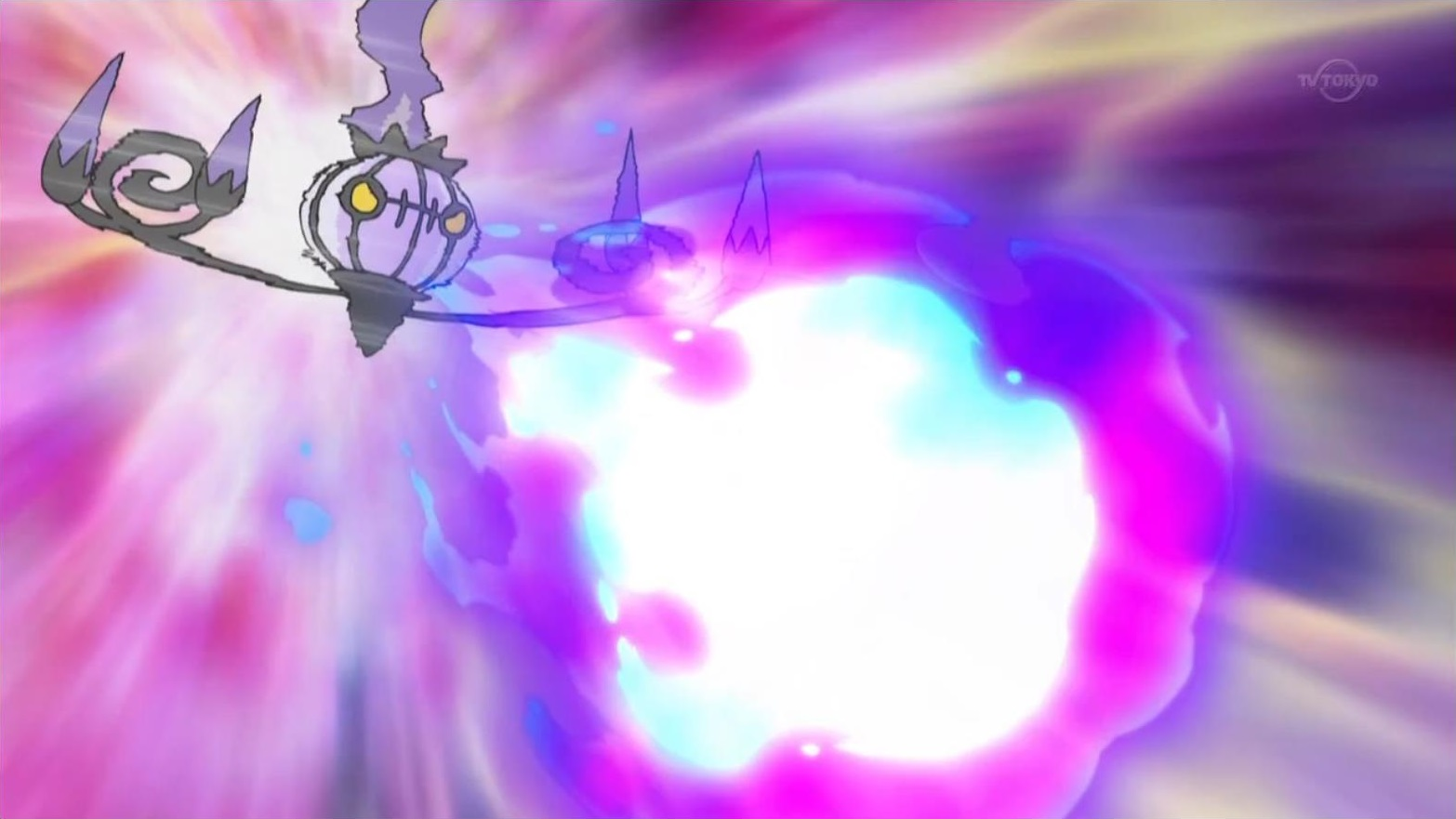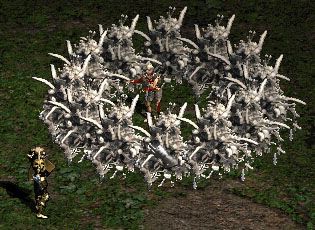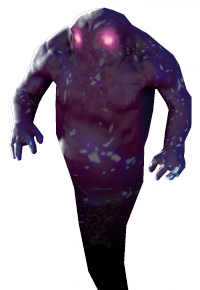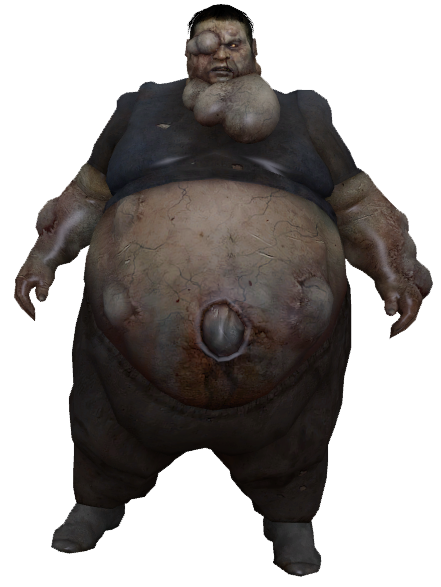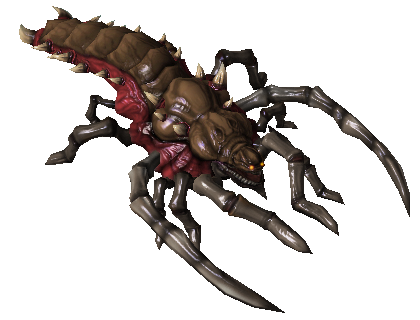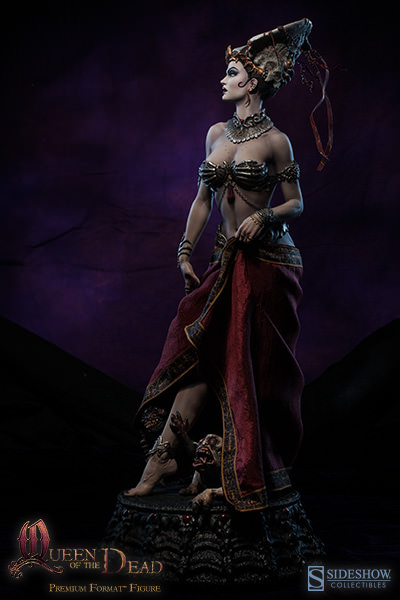Back to Audley's Workshop we go! In
today's blog, I'm going to be talking about some various Halo weapons
as well as PlanetSide 2's incarnation of the Vanu Rocket Launcher,
the Lancer, and finally, my favorite FPS weapon design of all time.
The general focus will be weapons with very distinct niches, whether
they underperformed or overperformed in those niches.
First, the gun labeled the Type-25
Carbine...but more commonly known as the Spiker. This gun looks
badass. Like other Brute weapons, blades are a big part of its
visual design.
I was one of the top 10 players in
Spiker kills in Halo 3 according to HaloCharts back when the website
was active and tracking stats through Bungie's API. So, if you're
reading this and wondering, “Why does this MLG kid think he can
talk about a social weapon?”...first off: I'm a BTB kid, not an MLG
one. I only got into competitive 4s because there was a more
established scene. I will always feel BTB is the more “pure”
Halo experience and the better representation of the game's beautiful
sandbox. Hell, I even took down Disco (top Social pilot) in his
Banshee with Spikers once. Hitting a Banshee with short-range
projectiles is not an easy task. I knew my way around the Brute
equivalent to the SMG.
But wait, equivalent to an SMG? ...the
Spiker is supposed to be a Carbine. Or a Spike Rifle. Why is Master
Chief able to dual-wield a rifle from a species of creature more than
double his size? Why is it treated like a submachine gun instead of
a RIFLE OR CARBINE as the weapon name says?
Some quick notes about the Spiker:
Higher damage output than the SMG,
and more damage to shields
Projectile, harder to aim
Spikes affected by gravity (and
inertia, they move more slowly as they go)
Larger spread than any other
weapon in UNSC/Covenant sandbox
Deals 2 more points of damage
(TWO. REALLY?!) than default melee.
So the Spiker suffers not only from an
identity problem (SMG RIFLE WHAT ARE YOU DAMN IT), but also suffers
from its gameplay not matching its visual.
There are two routes we can take to
make the gun feel better to the player. We can embrace the
Covenant/Brute SMG identity, or we can turn the gun into a true Spike
Rifle. Given the Covenant already have the Plasma Rifle to rival the
SMG, but don't have an equivalent to the Assault Rifle in the context
of Halo 3... let's take the Spike Rifle along the latter route. No
more dual wielding.
Since the Spiker is meant to be a Brute
weapon, this definitely means we need it to be fearsome up close.
Brute combat was very much about rushing. Besides, the weapon has
GIANT FUCKING DOUBLE BLADES attached to it. Halo 2 took the right
approach to the Brute Shot's melee identity during the big patch that
reworked damage, allowing a momentum Brute Shot melee to kill a
target in one hit. This made the Brute Shot a fearsome close range
weapon (even though the weapon itself was intended to be wielded at
range.)
So step 1: Greatly increase the
Spiker's melee damage. None of this 2 damage shit. Make it a one
hit kill. Because you should never be in range of a Brute.
Step 2: Since we're making it live up
to the Rifle moniker, rather than working as a dual-wielded SMG, we
need to increase the effective range. To do this, we need to reduce
the effects of gravity (projectile drop) on the spikes and reduce the
enormous bullet spread of the gun. Just to make it fire a bit
straighter in general, so medium range becomes a reasonable distance
to try to deal some damage.
Okay, so now it's a rifle. And it's a
scary rifle in melee range. But what about that old “Audley gives
everything unique identity or a niche to fill” bit? Don't worry,
I'm getting to that.
The Spiker fires super-heated spikes.
It's not unreasonable to think they would cool off as they traveled.
Plus, we've already mentioned the bullet velocity decreases as they
go.
So because of this, we can take the
route PlanetSide 2 takes with nearly all of its weapons – have the
damage fall off at longer ranges. Up close, the Spikers spikes will
deal enormous amounts of damage per bolt. Further away, the damage
falls off slightly, decaying a small amount below the AR's damage
output. In short, the weapon becomes stronger than the AR in closer
quarters, but weaker as the range increases.
And now we've made the Spiker live up
to its name as the Type-25 Carbine / Spike Rifle. And made it live
up to its visual of the blades.
(Of course, if you wanted to turn it
into a Tier 2 Power Weapon rather than just “the Brute AR”...you
could go a step further and have the super heated visual of the
glowing weapon also transfer to the weapons to where its damage
increases at higher RoF / the damage carries longer range before the
falloff occurs, but this would probably be a bit much / borderline
superfluous.)
Since we're on the subject of Pseudo
Assault Rifles...next on the anvil...
The Halo 4 Suppressor.
Even down to the bolts, this gun was
basically a re-skinned Spiker. But we've already adjusted the
Spiker. Let's not give the Suppressor the same treatment. In the
context of Halo 4, we have the Assault Rifle... humanity's relatively
low shield damage, high health damage automatic weapon...and the
Storm Rifle, the Covenant projectile high shield, low health damage
automatic weapon. It's fairly boring and doesn't create any
interesting decisions or improved niche to make the Suppressor a
“neutral” version of this where the damage is in the middle. I
believe (might be mistaken) the Suppressor had the highest RoF and
the highest bullet spread of Halo 4 Automatic weapons.
So...let's change that. Let's give the
Suppressor its own unique niche among Automatics that no other Halo
automatic has attempted. After all, the thing is called the
Suppressor. Let's go all out on its capabilities for suppressing
fire (extinguisher).
Call it plagiarism, but there's
actually a weapon from another game I think would fit perfectly for
the Suppressor's intended niche.
If you know this weapon,
congratulations, you've played one of the most fun arena game series
of all time, Armored Core. This is the “Finger” – it had
various different prefixes over the franchise's different games.
But this gun was AMAZING at close
ranges.
Why?
Because it was a MACHINE GUN SHOTGUN.
It had an absurd rate of fire but also fired multiple bullets at
once.
Now put that in Halo.
Turn the Suppressor into a gun that
fires a METRIC FUCKTON of bullets, all at the same time. A barrage
of bullets, blazing across the sky. It becomes a complete melter at
close quarters. Give it a large enough magazine and it can become a
weapon that, although inefficient for killing at range, could at
least sustain enough swarm of bullets to scare off those who fear
bees.
(Shotgunified Automatic weapons in
Tower of Guns are also pretty fucking badass. Or automatic version
of the Shrapnel Trumpet. You know, whatever.)
Speaking of shotguns in Halo 4...
The Boltshot!
Because who
doesn't want to SPAWN WITH A SHOTGUN, right?
Someone at 343, in
the creation of the Halo 4 sandbox, thought to themselves, “Creating
a gun that can deal instant kill damage, and being able to use that
gun off spawn is definitely a healthy thing for this game.”
Granted,
functionally its instant kill was similar to the Plasma Pistol –
gated by a charge-up that was required before the gun fired. In
theory it wasn't too
oppressive. Unfortunately, when you arm potentially everyone in a
game with a weapon that can instant kill, the problem is that
everyone in the game will take the weapon that can instant kill.
When that weapon is range gated, it leads to gameplay issues.
The
Boltshot was a unique pistol. And a cool design. But it was
unquestionably too powerful.
So,
what can you do to the Boltshot to keep its identity of “Shotgun
Pistol” without turning it into the Halo 3 Mauler but also keeping
it from being a one-hit kill weapon?
Nerf
the damage. Make its charged up damage deal full shield damage, but
make the body damage fairly weak, such as taking 3 charged shots to
kill a foe. With this change, you can make it so the effective
range of the charged shot isn't forced to be immediate vicinity.
Increase
the charge-up time slightly. Since it's not killing foes with the
Charge now, it doesn't need a slow charge.
Decrease
the amount of ammo consumed by a charge-up to 3. This will further
encourage charge shots + follow-up pistol bullets.
With
these changes, you turn the gun from an outright shotgun pistol into
a gun that's balanced for skill. It's got the pseudo-shotgun
identity of having a ton of burst damage at close range, but you
still need to be able to land the pistol headshots in order to
reliably finish a kill. Unlike a true Noob Combo though (the Plasma
Pistol + Battle Rifle combo from Halo 2, if you're for some reason
unfamiliar), this one-weapon version is limited in range. So there's
still room for swapping out your weapon for a better version.
I've
done a good job with my segues so far this blog... but now I'm all
out of good segues. A good one for this next weapon is a bit out of
Reach.
The
Plasma Launcher. Also known in the BTB community as Blueberries.
This gun was actually pretty useless in the vehicle killing niche.
Where it should have theoretically been strong.
It
could take down a Warthog, but what couldn't? The Warthog's armor
was paper thin and shredded easily by a team's worth of DMRs. Which,
coincidentally, had a stronger scope than the Plasma Launcher.
The
true terror vehicles of BTB were tanks, the pseudo-tank Revenant, and
the Banshee. Tanks could nearly shrug off the damage. The Revenant
was agile enough to escape the extremely slow engagement time. And
the Banshee only needed to do a single roll to break any lock-on that
was attained.
So
basically, you have a useless power weapon on your hands. Because
again, the DMR out-ranges the Plasma Launcher, so even against foot
soldiers, the weapon with the potential to one-hit kill is
outclassed.
The
draw of the Plasma Launcher was supposed to be it's ability to fire
multiple sticky grenades at once, in addition to its lock-on
functionality.
I
will give credit where credit is due, the slow projectile speed means
there's plenty of room for counterplay to the power weapon.
Unfortunately, combining a necessity to lock on to truly be effective
with a slow projectile speed means you're really hurting for
effectiveness. So what can we do to make the Plasma Launcher more
useful without making it overpowered?
For
dealing with infantry, giving it the ability to lock onto multiple
targets with a single charge could help a lot, turning the weapon
into a “crowd control” weapon, rather than a “Okay I pick you.”
“Now you.” one by one weapon. Allowing each of the four
grenades to seek out a different target with up to four potential
locks puts more power in the hands of the wielder in situations where
he is outnumbered, with opportunity to take everyone down with him,
if he's fast enough on the draw.
With
the amount of armor abilities in Reach that catered to mobility or
defense (read: basically all of them), there were plenty of ways to
escape a Plasma Launcher bolt if it was coming your way. Because of
this, speeding up either the grenades' travel time or the target
acquisition speed is important for empowering the weapon. Players
who complain about power weapons being powerful when given so many
tools for counterplay BEYOND JUST DODGING, WHICH IS ALSO POSSIBLE
will learn the power of the blueberries.
But
how do we make it better against the Banshee?
If
you improve the travel time, keeping the lock-on time the same, you
can edit the Banshee to only be able to shed ATTEMPTED locks, rather
than already-secured ones. The Banshee when piloted by ace pilots
probably won't spend enough time without flipping to get a lock on in
the first place, so this would generally solve that problem.
As
for making the weapon more effective against tanks, that's simply a
matter of the player wielding it getting in a position where they
won't be killed attempting to get a lock on.
That's
all for Halo on this blog, but it's time to talk about another
“rocket launcher” that featured a charge-up time. The PlanetSide
2 Vanu Sovereignty Lancer.
In
the original PlanetSide, the Vanu Lancer was essentially a 6-shot
rifle that dealt significant damage to vehicles/armor. PlanetSide 2
mostly tried to keep that in tact, but turned the Lancer into a
bitchified version of the Halo Spartan Laser, with three levels of
charge up damage.
As
with many of the weapons in PlanetSide 2's arsenal, the weapon had to
be balanced for “What happens if a fuckton of people use it?”
As
a result, the weapon felt almost useless for a single person to use.
It didn't fill a niche of a “rocket launcher” at all for an
individual. If you were by yourself, it was almost always more
efficient to carry a dumbfire or a lock-on rocket launcher as a Vanu
soldier, because it meant you could either kill infantry that
approached or scare off vehicles with the threat of a lock on.
So
how do you balance an anti-vehicle weapon for scale? How do you make
a weapon that is potentially oppressive for squads of people to use
feel satisfying for an individual to use? This is an important
design question for every piece of the PlanetSide sandbox, as well as
being important to ask in games like Battlefield or Halo in the case
of BTB and upcoming Warzone. (Hell, in League of Legends we saw
three instances where a summoner spell taken by an entire team ended
up problematic because of how stacking them worked. Heal, Promote,
and Fortify all had design problems regarding scalability.)
So
now, what do you do to make a weapon such as an anti-vehicle laser
interesting/useful for an
individual,
but not overpowered for a squad?
The
Lancer's identity was supposed to be a sort of “Anti-Vehicle
Sniper” – it even required some degree of leading your shot
despite being a laser beam.
Unfortunately
an easy answer like “give vehicles weak points to aim for” was
not an explorable option for PlanetSide 2 since that would mean
additional sprites were necessary which would have destroyed game
performance.
I
do believe the Lancer was the longest range “Rocket Launcher” in
the game. So wielding it, even as an individual, meant one could at
least harass vehicles from far out of their engagement range.
However, because of Engineers' potential to repair a vehicle more
quickly than a Lancer could damage it, it wasn't really possible to
do relevant chip damage to a vehicle.
Instead
of buffing impact damage, giving the Lancer a damage-over-time effect
which does not stack (but similar in power to the amount a single
Engineer could repair, with a duration roughly equal to a charge time
for another Lancer shot) would allow a single Lancer to feel
impactful against a target – ensuring that each shot would be
impactful, while the damager-over-time would offset the potential for
the vehicle's driver to simply hop out and repair until the
Lancer-wielder ran out of ammo. Additionally, since the
damage-over-time effect does not stack (simply reapplies), having
multiple Lancers firing would not make the weapons any more fearsome
than usual in a group.
It
would empower an individual, but keep the groups in check.
And
so the PlanetSide 2 Lancer is more satisfying for an individual and
still relevant in its niche as the Anti-Vehicle Sniper.
So
finally, we come to my favorite weapon from any shooter ever.
It
comes from Unreal Tournament (big surprise)
This
is the Shock Rifle. A glorious projectile weapon with a hit-scan
alternate fire method.
I'm
not here to redesign the weapon or suggest any methods on how to
improve it. I'm just here to share the gospel of a fantastic weapon.
The
gun could fire either straight laser beams or “shock cores” which
traveled significantly slower than the laser beams. The shock cores
could then be hit by the laser beams and detonated from a range,
dealing a massive amount of AoE damage that usually killed a target
it one hit.
It's
a brilliant skillful design with tons of nuance and mastery. Good
counterplay due to the slower projectile speed of the instant kill.
Tons of clarity of what's going on. Every gun should strive to be as
awesome and satisfying as the Unreal Tournament Shock Rifle.
And
if the Shock Rifle weren't cool enough, they took that gun concept
and put it into a vehicle as well, known as the Hellraiser, which
could rapid fire Shock Cores, and then detonate them in a chain of
explosions. Just in case you needed to feel truly epic.
With
that, this blog is donezo. Hope you enjoyed the read!



